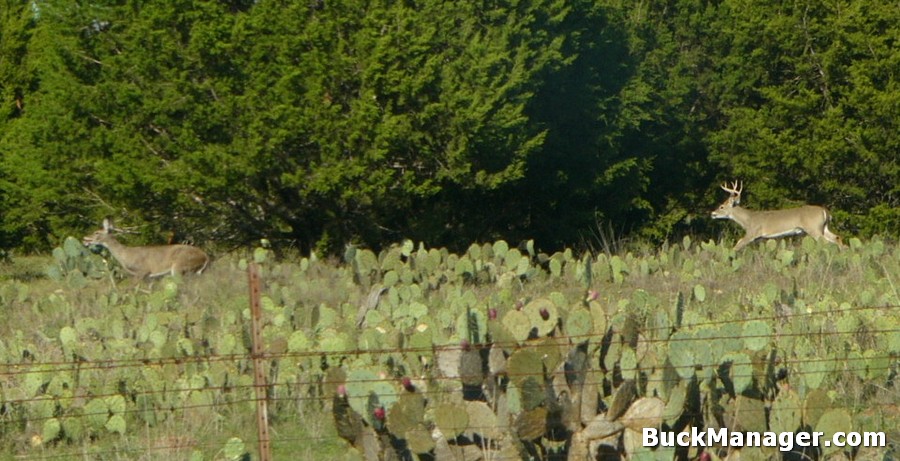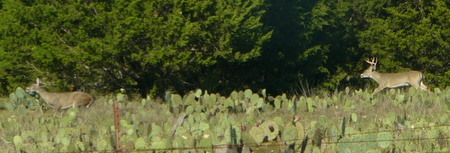What about the early and late ruts? Hunters often talk about the rut being early or late. In much of Texas at least, the breeding season for white-tailed deer is fairly predictable each year. This is the case just about everywhere there are deer, but it can vary a little. Within a specific area, habitat conditions not only affect fawn survival but can affect the timing of breeding, as well. For example, a doe in poor condition, i.e. not enough deer food, or a young doe may not enter estrus/breed until later in the season when her physical condition improves.
Additionally, a whitetail doe may be found “attractive” by bucks for about five days, but may be willing to breed for a period of only about 24 hours. In areas where there are a low number of bucks compared to does, a doe may not encounter a buck when she is first receptive to breeding so may not be bred until one of her later cycles. If a doe is not bred during her first cycle then she will come into estrus again about 28 days later.
A hunter who sees the late breeding activity may be convinced that there was a late rut. On the other hand, those who see does attended by bucks in the early part of the season believe there was an early rut. This biological reasoning helps explain the wide variety of opinions on the timing of the whitetail rut during a particular year. Although there is typically a peak, it can be ongoing.
Furthermore, hunting activity itself has a lot to do with the “perceived” timing of the rut. Traditionally, hunters are more likely to be in the field early in the season or during cooler weather. They will usually be out in force with the onset of the first weekend cold font during the deer season. When there are many observers spending time in the field it is more likely that at least some breeding activity will be noticed. Basically, more people to see what’s going on… more talking points for the campfire, the coffee shop.
White-tailed bucks, like the people who hunt them, have a tendency to move more during cold weather. Bucks are ready to breed and are looking for a willing doe. More movement means more opportunity to encounter a receptive doe. Bucks go to doe-holding hot spots again and again hoping that each visit will pay off big. Hey, you never know. This increased deer movement helps give rise to the idea that cold weather causes the rut. However, if you think about it, this theory is disproved by white-tailed deer breeding in tropical climates. It’s always warm there.
There are thoughts that late rutting and breeding in deer contributes to late fawning and subsequent problems with fawn survival (as well as poorly developed antlers on yearly bucks the following year). In Texas, it would make sense that newly weaned fawns in late fall would have a harder time surviving because of typically poorer habitat conditions. A lack of adequate deer nutrition at this time could affect future body development in all deer and antler production in bucks. A study, however, showed that very few fawns are born late in Texas. South Texas has the latest breeding period of just about anywhere in the US, but even there the majority of fawns are born before August and are weaned by October.
Just some things to consider when another hunter mentions a late or early rut hypothesis. The peak of the rut generally happens about the same time each year in an area, which is based on photoperiod (length of daylight hours). But there are numerous, additional factors that play a role in determining when an individual deer may be bred.

